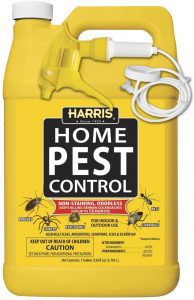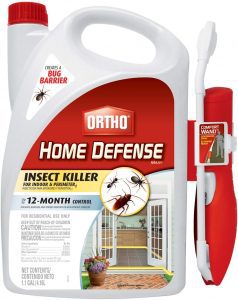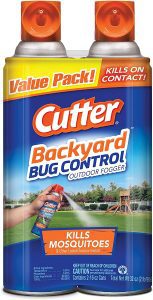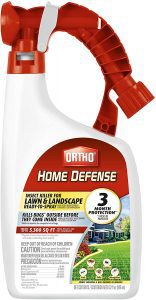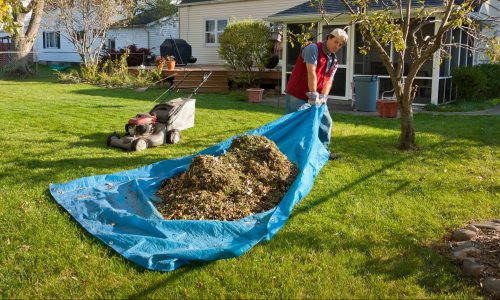The Best Bug Killer Spray

Our Review Process
Don't Waste Your Money is focused on helping you make the best purchasing decision. Our team of experts spends hundreds of hours analyzing, testing, and researching products so you don't have to. Learn more.
Our Picks For The Top Bug Killer Sprays
- 1. Raid Garden & House Bug Killer Spray, 11-Ounce
- 2. Ortho Quick Dry Bug Killer Spray, 14-Ounce
- 3. HARRIS Odorless Bug Killer Spray, 1-Gallon
- 4. Ortho Non-Staining Home Defense MAX Bug Killer Spray, 1.1-Gallon
- 5. Cutter Fogger & Bug Killer Spray, 16-Ounce, 2-Pack
- 6. Ortho Landscape & Lawn Bug Killer Spray, 32-Ounce
Raid has a stellar reputation for its bug and insect spray products, and this pick is no exception. This bug spray gets rid of a wide variety of pests on contact without a lingering chemical smell.
Smart ChoiceUse this aerosol option to eliminate creepy-crawly bugs indoors and out.
Ortho’s spray works at any angle, including upside down. This long-lasting, no-fume spray kills existing indoor insects and leaves a residual barrier to keep out spiders, roaches and ants.
Fast and EffectiveUse this helpful product and move on with your day — no bugs should remain after the application.
This product comes in a gallon-sized container for situations that call for a larger amount of safe indoor bug-killing spray. It includes an extended trigger spray that can get into tight places.
For Bigger JobsLet bugs know that they aren’t welcome with this effective interior spray.
Ortho Home Defense Max in a gallon container comes with an easy-to-use wand sprayer. It kills insects in your home and can create a barrier that can keep roaches, ants and spiders away for up to a year. This odor-free spray will also keep your home free of annoying insects long after the spray has dried.
Bugs Not Welcome HereKeep insects out of the house for a long time with this handy spray.
Buying Guide
Bug sprays can be designed to keep bugs away (repellents) or to kill them. However, some sprays can do both. The types of repellents used on humans and pets are different from ones made to keep insects away from homes and outdoor spaces, though.
Bug killing sprays are considered to be insecticides. These products kill insects on contact, in most cases. While some are used for spot treatments and last for one application, others can create barriers or perimeters that last for weeks or months.
Bug killing sprays are generally made from chemicals called pyrethroids; these man-made pesticides are also found in other commercial products like pet sprays and pet shampoos. Common pyrethroids found in bug killing sprays include sumithrin, resmethrin and permethrin.
These chemicals are used in very low levels, but anyone who is accidentally exposed to an extremely large amount could have symptoms like nausea, headache, diarrhea and dizziness. Always follow the label directions when using these sprays.
Indoor spot treatment bug killer sprays work well on roaches, flies, ants, bedbugs and fleas, but if you want to keep them from coming back, look for products that have barrier protection.
There are also indoor foggers; these create fine mists that let the insecticide penetrate under baseboards and into crevices to kill insects that are not easily visible. Many of these sprays come in gallon-sized containers with attached spray wands. Note that you can use exterior foggers outside your house, but do not use these indoors.
What to Look For
- Keep children and pets away when insecticides are being applied and until the product has dried. Be sure to read the label for guidelines.
- Do not use foggers unless absolutely necessary.
- Only use insecticides that are approved for in-home use. Do not use outdoor pesticides inside your home.
- Always keep bug spray killer in its original container. Never transfer it to another one.
- Handling these chemicals more than needed is not recommended.
- Do not mix these products with any other chemicals.
- Store insecticides where they cannot be reached by children or pets.
More to Explore
Have you ever looked at a bug up close? Some of them can be pretty frightening.
One of the scariest is the scorpion fly, which looks like a miniature scorpion and has giant black eyes. The brahmin moth caterpillar has spindly tentacles, and the goliath birdeater is a gigantic tarantula that can eat an entire bird.
There’s also the titan beetle, which can be up to 6.5 inches long, is deep brown and has gigantic mandibles that can chop a pencil right in half. Grossed out? Don’t worry — it’s unlikely you will run across most of these bugs in your daily travels.




